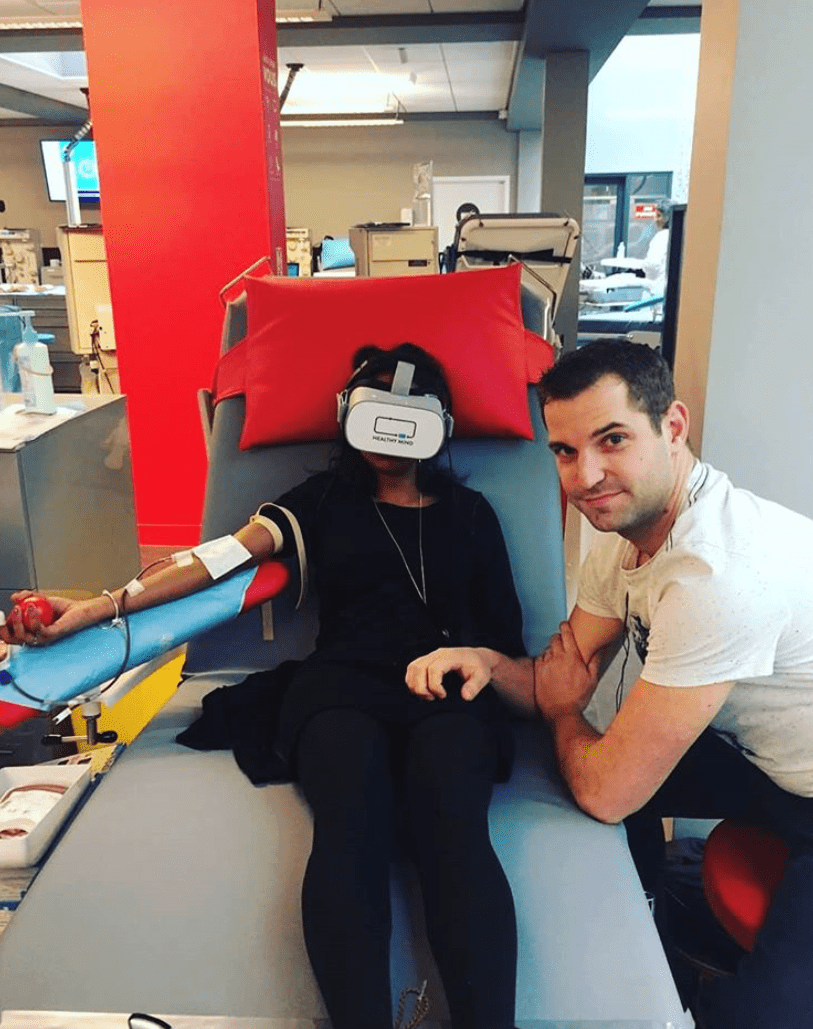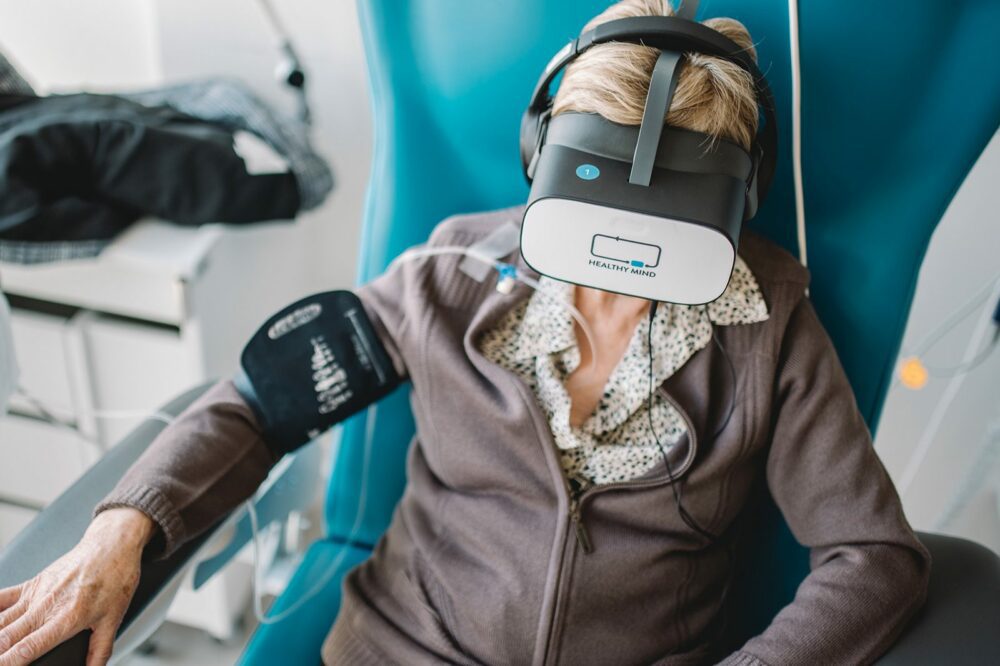“In 1 hour, I saved 3 lives” is the slogan of the French Blood Establishment (EFS) to encourage national mobilization. Although the donation process is undoubtedly commendable, a large number of people still do not go to the blood collection points. However, this approach remains essential to ensure self-sufficiency in blood products in France, whether for hospital patients or for the production of medicines. So what are the obstacles that hold back non-donors? In this article, we question these hurdles that still prevent many French people from giving blood and discuss how virtual reality can provide valuable support to overcome some of them.
Donating blood: what’s the point?
Despite all the medical innovations that flourish every year, no treatment or synthetic drug is currently capable of reproducing human blood. However, its use remains essential in many hospital settings:
- emergency situations such as haemorrhage, during surgery, childbirth or following an accident;
- chronic needs such as blood diseases and cancers that sometimes require regular monitoring and transfusions (leukaemia, lymphoma, myeloma, myelodysplasia, etc.);
- the manufacture of medicines.
Every year, blood donations allow 1 million patients to be treated. Of these, 47% are transfused for the treatment of blood diseases or cancers and 35% are transfused for surgical procedures.
Haemorrhages are the main source of blood requirements for hospitals and emergency physicians. In such situations, blood bags must be available in less than half an hour. Especially since blood products from donations have a limited shelf life:
- 7 days for platelets ;
- 42 days for red blood cells;
- 365 days for plasma.
To meet national needs, the French Blood Establishment (EFS) requires 10,000 donations every day. With more than 115 donation centres and 40,000 mobile collection points (public places, companies, universities, etc.), blood donation is accessible in most regions. And for good reason, regular and continuous mobilisation is essential to meet hospital and pharmaceutical needs for labile blood products.

The main obstacles to blood donation
Blood donation is an essential act for the care of patients, which is why psychosocial research on behaviour has sought to identify the factors that encourage or discourage donation. If for first-time donors, the obstacles are mostly logistical or organisational, the reasons differ for non-donors who have various personal barriers.
In France, blood donation is a voluntary act of solidarity, and these founding principles prevent blood transfusion from being remunerated, unlike in the United States for example. As a result, blood donation has a favourable image and the intention to donate remains widely shared.
However, despite this positive perception, many people do not give blood and there are several fears involved:
- fear of the needle, one of the main obstacles to blood donation according to the Sojka and Sojka study (2008);
- the apprehension of seeing blood;
- fear of catching diseases;
- stress over the amount of blood collected and the possible fatigue that follows;
- the waiting period.
In addition to these hurdles, non-donors consider the act of donating as intrusive, complex, cold, and have difficulty in materialising what will happen to the blood collected.

Blood donation and virtual reality: an effective way to overcome apprehensions
While virtual reality cannot overcome the practical barriers associated with blood donation, it can act on the emotional barriers.
Developed in close collaboration with doctors and neuroscience experts, the Healthy Mind solution relies on the brain’s cognitive abilities to modulate pain pathways. The device uses visual and auditory stimulation, attention diversion and other principles with proven relaxing and anaesthetic effectiveness such as music therapy, hypnosis or cardiac coherence. The combination of these tools produces a fully customisable software capable of reducing pain and anxiety.
In this sense, the use of virtual reality in the context of blood donation has more than one interest. Immersions allow for better management of anxiety, a particularly problematic aspect for non-donors. By immersing users in a high graphic quality environment, they are able to extract themselves from an anxiety-provoking landscape and focus on a place designed to relax them. In this way, the fear of the needle or the fear of blood dissipates.

Virtual reality headsets can make blood donation a fun experience and encourage first-time donors and non-donors to donate. Moreover, the use of such a device during the waiting phase helps to reduce the obstacles linked to the anticipation of the coming injection. For regular donors, immersion offers an entertaining and relaxing environment, especially as this technology is generally the subject of curiosity.
On the other hand, the reduction of apprehensions with the help of virtual reality allows medical staff to focus on the educational aspect of the donation, especially the journey of the collected blood. For more information on the procedure, the EFS website provides answers to the most frequently asked questions.
Donating blood is an act whose necessity is widely recognised. To overcome the fears of non-donors, Healthy Mind’s virtual reality addresses various obstacles such as the fear of seeing blood or of being in pain. With a non-invasive, recreational, adjustable and light device, the helmets are perfectly adapted to the mobility and practicality needs of the collection points. If you would like to experience the immersions and test the devices, we would be delighted to organise a demonstration.
Sources :
- Johanna Charbonneau, INRS (National Institute for Scientific Research), Studying motivations to donate blood: the contribution of psychology and sociology, Research note;
- Laure Ambroise, Isabelle Prim-Allaz, Martine Seville. Attracting and retaining blood donors. 2010. halshs-00519515v2 ;
- Emmanuelle Boch, Jean-Luc Giannelloni, Blood donation: understanding the logic of donors and the value of donation to encourage donor recruitment and retention;
- Public Health France, Blood donors in France: key figures 2019-2021;
- Why donate, EFS (French Blood Establishment).







